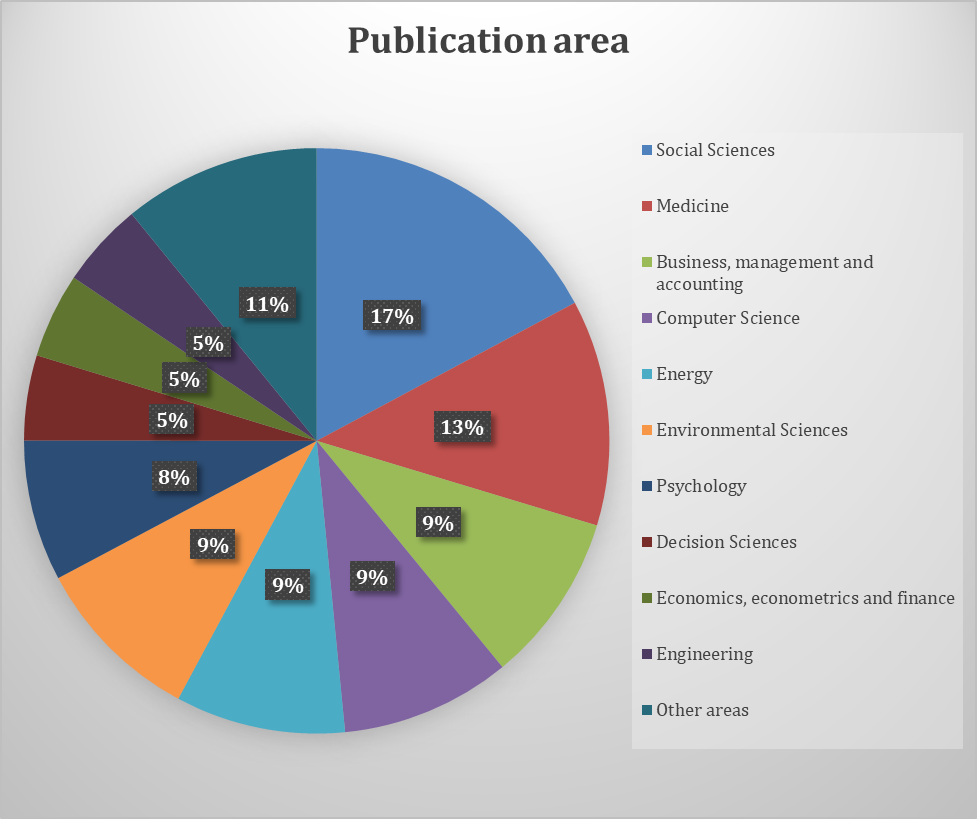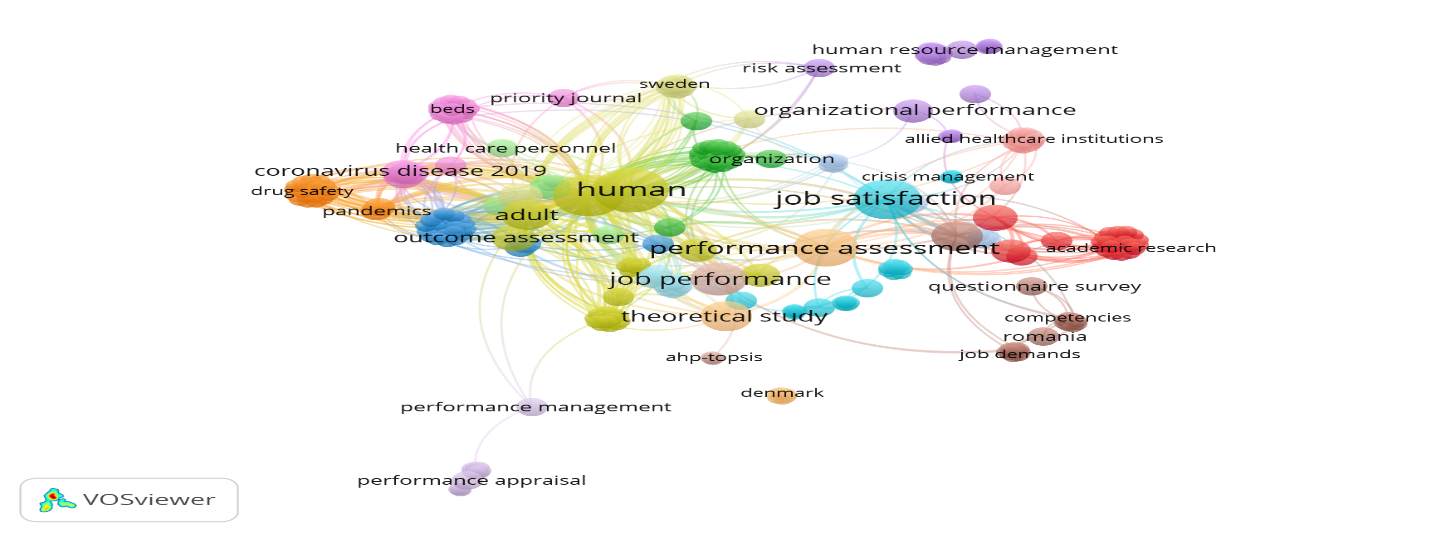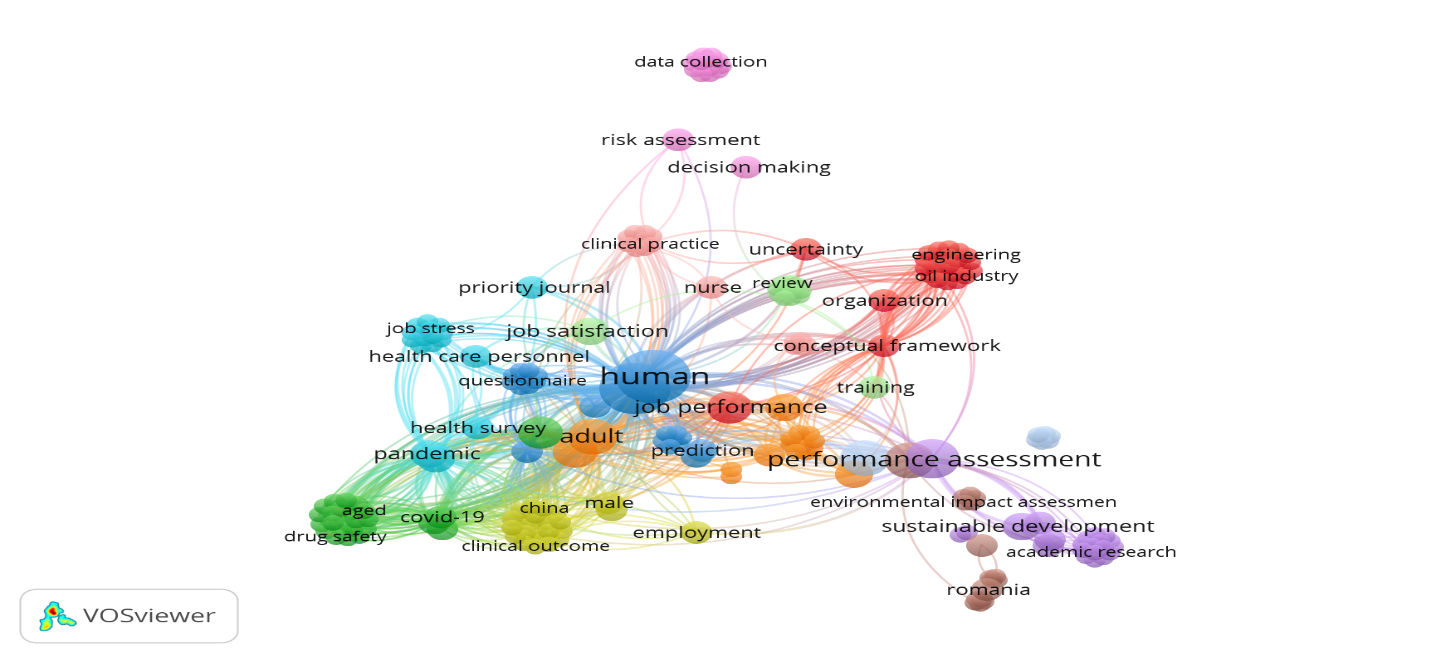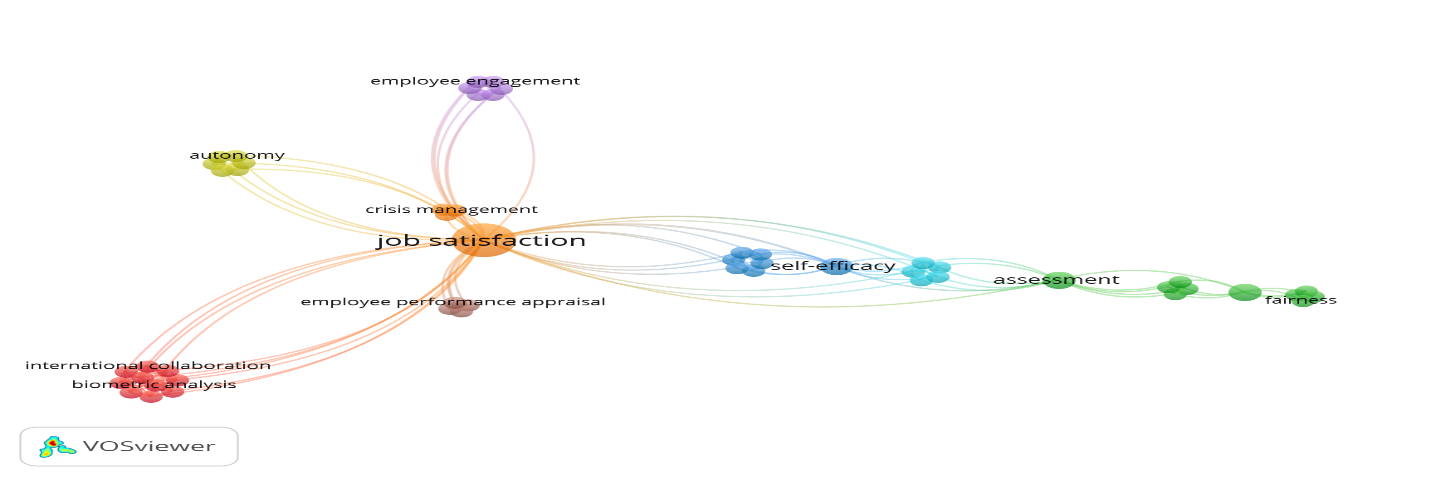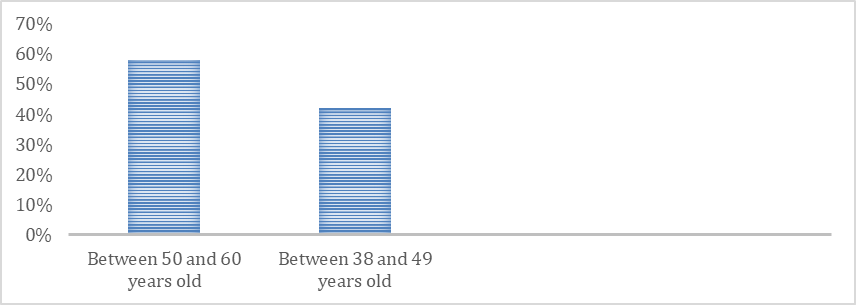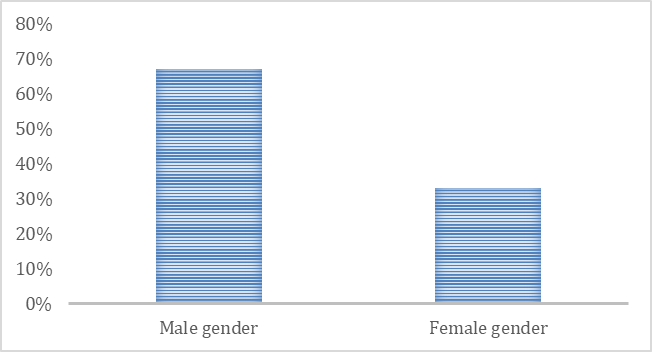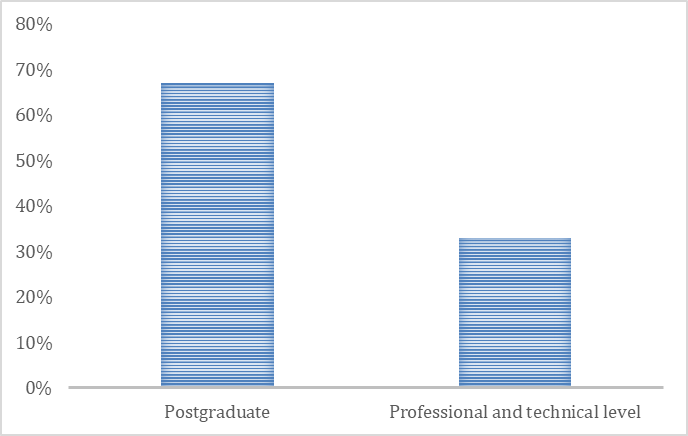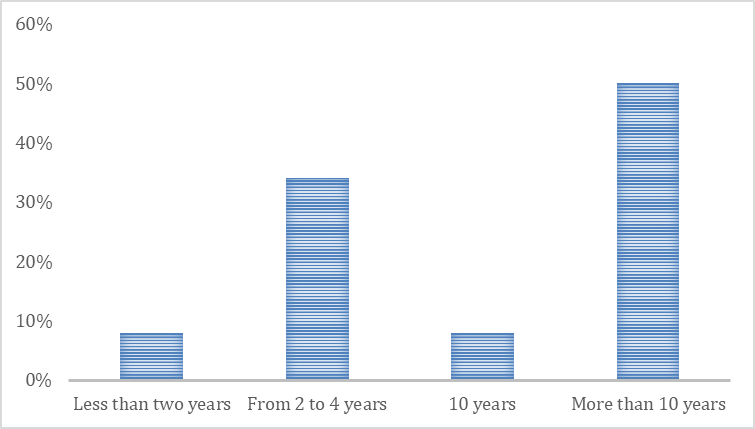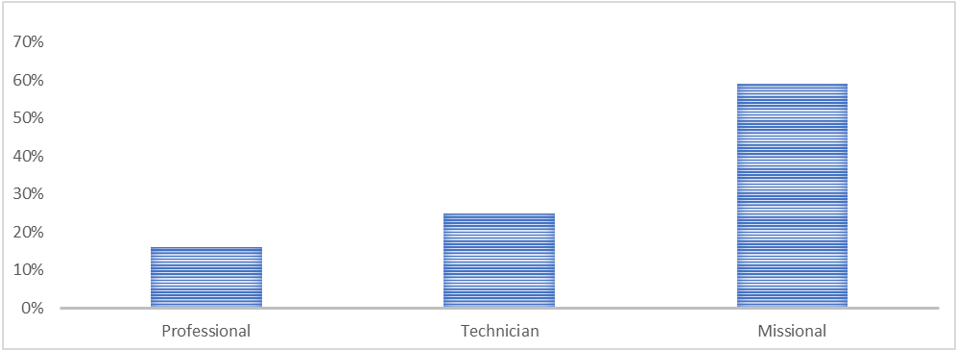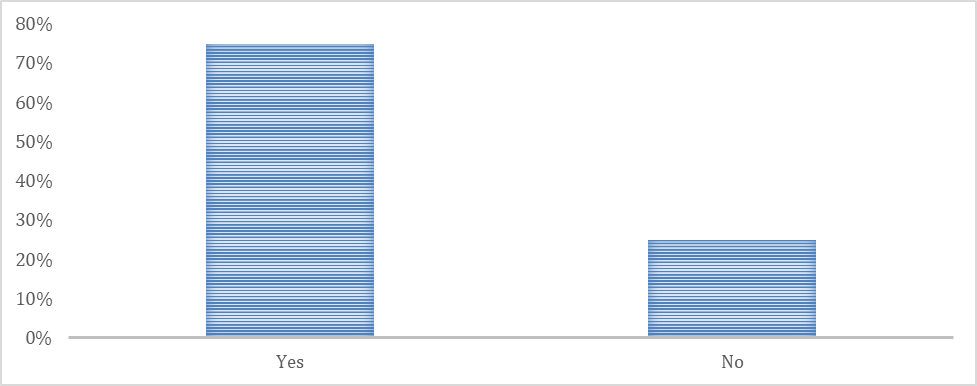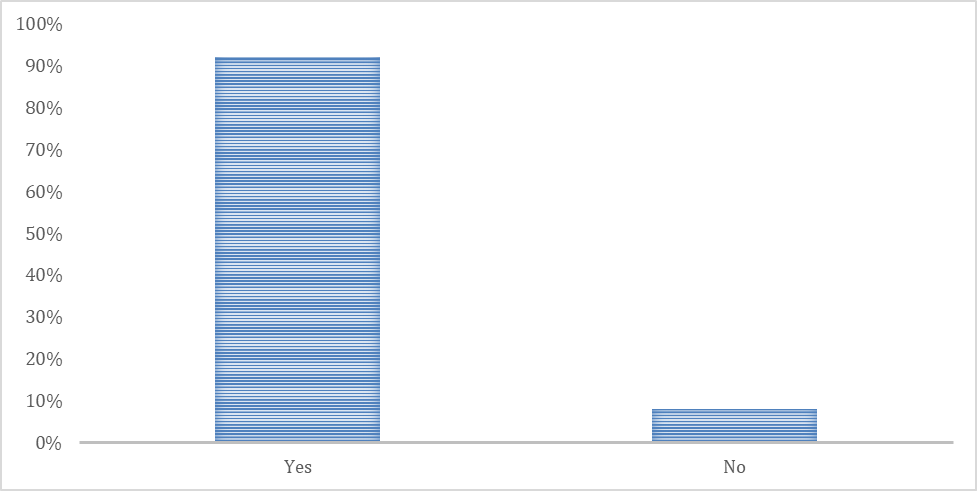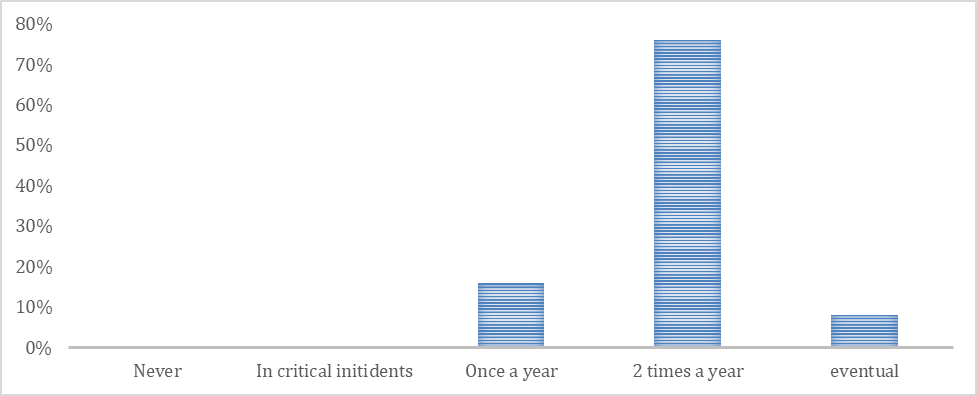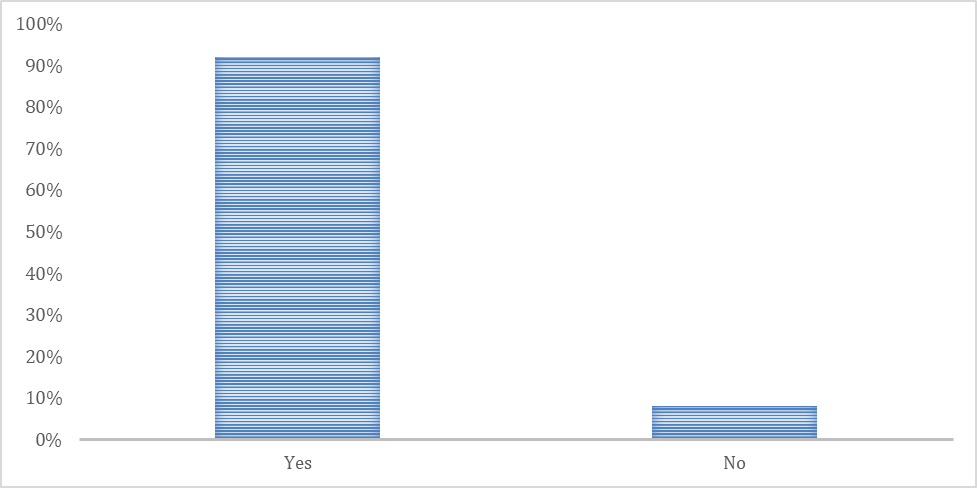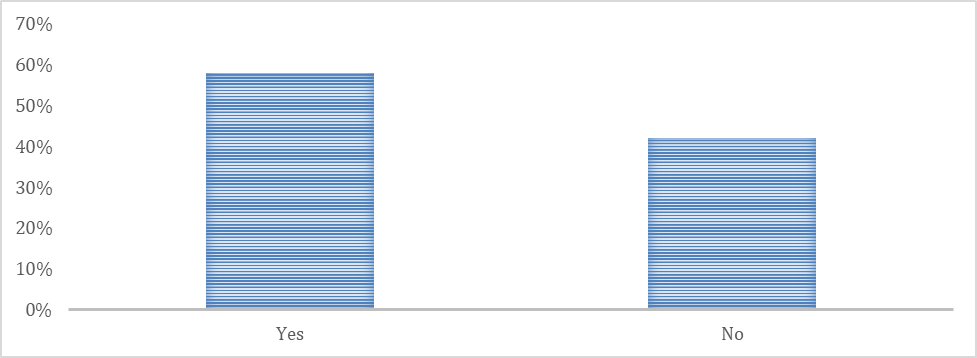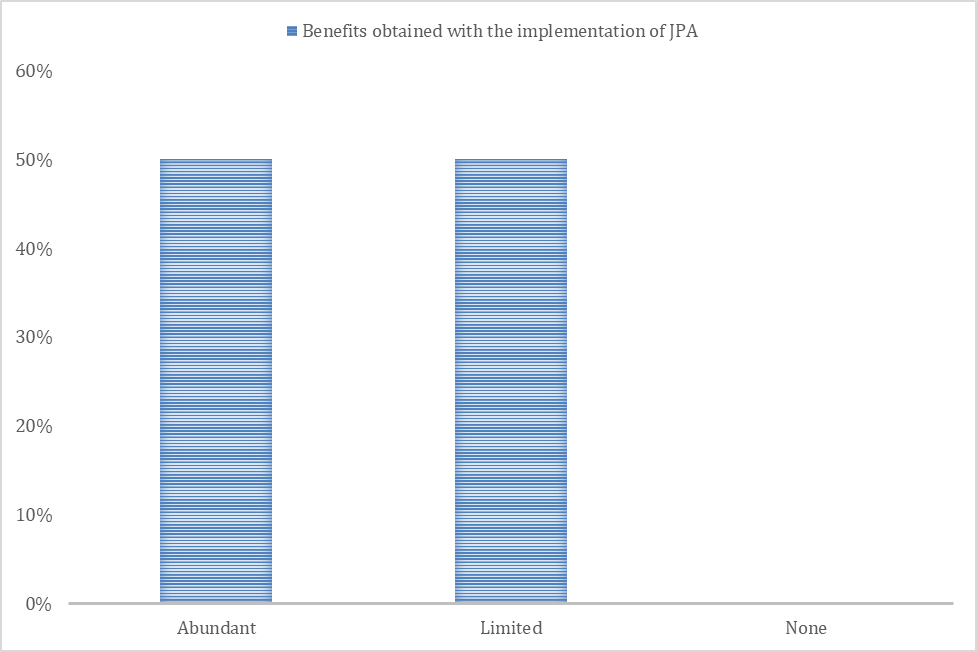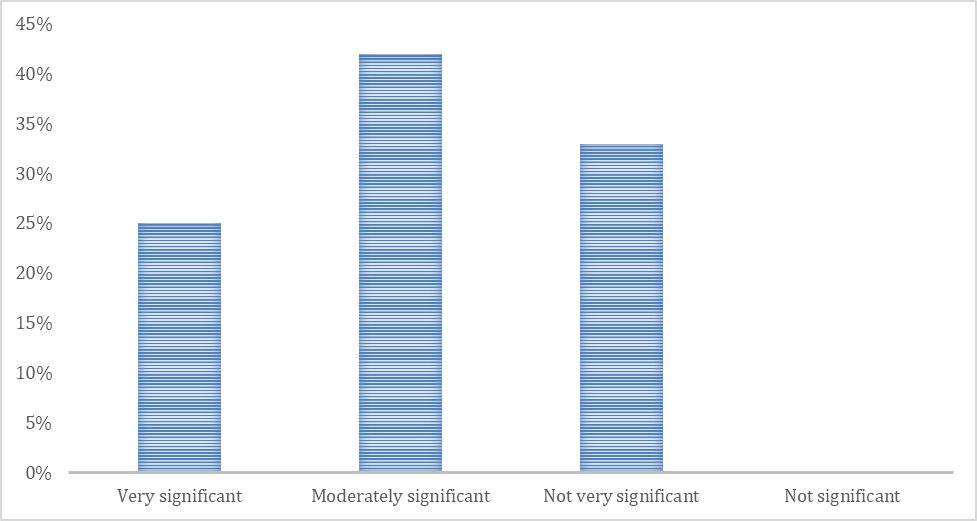doi: 10.58763/rc2024330
Scientific and Technological Research Article
The evaluation of job performance as a mechanism for meeting institutional goals. A case study in the Risaralda, regional SENA
La evaluación al desempeño laboral como mecanismo de cumplimiento de las metas institucionales. Un estudio de caso en el SENA, regional Risaralda
Carlos Arturo Carvajal Quintero1 ![]() *
*
ABSTRACT
Performance is crucial in the study of organizations since it correlates with others, such as satisfaction, motivation, autonomy, or abandonment. However, its role in meeting organizational goals constitutes a fundamental and insufficiently explored topic. The purpose of the study was to establish the importance of evaluating work performance in organizations of the Colombian state sector and its influence on the achievement of the objectives of the Sena, regional Risaralda. The study had a mixed design that was developed as a case study. A literature review was carried out, a questionnaire was applied, semi-structured interviews were carried out, and inferences were drawn from participant observation. The results point to a divided assessment of the EDL performance evaluation as a tool for meeting the institutional goals of the entity. In addition, the need to raise awareness on the subject, delve into the perception of the factors associated with the process, and introduce changes based on the data obtained was confirmed.
Keywords: assessment, management, productivity, state.
JEL Classification: D22, D79, HI20, K23
RESUMEN
El desempeño constituye una categoría de crucial importancia en el estudio de las organizaciones, pues se correlaciona con otras, como la satisfacción, la motivación, la autonomía o el abandono. Sin embargo, su papel dentro del proceso de cumplimiento de las metas organizacionales constituye un tema fundamental e insuficientemente explorado. Este estudio tuvo como propósito establecer la importancia de la evaluación al desempeño laboral en las organizaciones del sector estatal colombiano y su influencia en el logro de los objetivos del Sena, regional Risaralda. El estudio contó con un diseño mixto que se desarrolló como estudio de caso; se realizó una revisión de la literatura; se aplicó un cuestionario; se realizaron entrevistas semiestructuradas y se extrajeron inferencias de la observación participante. Los resultados encontrados apuntan a una valoración dividida de la evaluación del desempeño EDL como herramienta para el cumplimiento de las metas institucionales de la entidad. Además, a partir de los datos obtenidos, se comprobó la necesidad de sensibilización sobre la temática, de ahondar en la percepción de los factores asociados al proceso y la introducción de cambios.
Palabras clave: estado, evaluación, gestión, rendimiento.
Clasificación JEL: D22, D79, HI20, K23
Received: 03-03-2024 Revised: 20-05-2024 Accepted: 15-06-2024 Published: 01-07-2024
Editor: Carlos
Alberto Gómez Cano ![]()
1Servicio Nacional de Aprendizaje. Pereira, Colombia.
Cite as: Carvajal, C. (2024). La evaluación al desempeño laboral como mecanismo de cumplimiento de las metas institucionales. Un estudio de caso en el SENA, regional Risaralda. Región Científica, 3(2), 2024330. https://doi.org/10.58763/rc2024330
INTRODUCTION
Job performance appraisal (JPA) is a crucial process for understanding how employees' actions, behaviors, and outcomes contribute to the achievement of organizational goals (Sophia & Sarno, 2019). Contextual and task-assigned performance are types of employee behavior that contribute to understanding typical individual performance and performance on tasks that require basic technical skills. Thus, their evaluation allows for measuring and analyzing employee performance to improve efficiency and productivity (Manasia et al., 2022).
In this sense, performance appraisal provides a wealth of valuable information regarding employees' strengths and weaknesses. Once processed, these data facilitate decision-making regarding training, promotions, and compensation (Ullauri et al., 2024). Therefore, it is fair to say that the JPA refers to a diagnostic tool in the prescriptive sense and, at the same time, provides the organization with valuable potential to increase its performance through proper process and human talent management (Petcu et al., 2021).
In this regard, one of the most significant benefits of professional performance evaluation is its ability to identify talent within the organization (Santiago-Torner, 2023). By objectively assessing employees' skills and competencies, companies recognize those individuals with high potential for growth and development (Mourão et al., 2022). This then translates into the establishment of personalized career plans, the retention of key talent, and the mitigation of weaknesses in their performance.
Nowadays, having detailed information on employee performance is an added value for companies, allowing them to invest in talent management from a sustainable perspective oriented toward the organization's future needs (Na-Nan et al., 2020). For example, companies frequently design specific training programs to incorporate new knowledge or technologies, set realistic goals, and align individual objectives with organizational objectives.
Furthermore, performance appraisal improves the work environment and interpersonal relationships within the company. Within the framework of an appropriate and salutogenic organizational culture, providing constructive feedback to employees encourages open, transparent, and balanced communication. According to the literature, proper management of the delivery and discussion of JPA results strengthens employees' trust and commitment to the organization (Peng et al., 2020; Woznyj et al., 2019).
Since the early 1990s, Colombia has been implementing systems to evaluate the management and performance of public officials. This system was conceived as a tool to measure the results of public administrators' performance in a timely and frequent manner; this has been a significant advance in this area, especially considering that corruption and other similar evils acted as motivating factors. Although the system is in line with the standards commonly cited at the international level, several shortcomings remain (Sindakis et al., 2024).
Consequently, it is crucial to investigate whether public administration is able to implement tools that unite stakeholders to carry out performance management and improve the efficiency of the State and its institutions in all processes. In addition to the aforementioned, the research process is based on an analysis of the difficulties in measuring the work and personal performance of career officials at the National Learning Service (SENA), Risaralda region.
The main objective was to determine the relevance of the JPA as a tool to meet institutional objectives in this SENA region. To achieve the aforementioned general objective, a case study was conducted, beginning with two literature reviews and a mixed-field research project. The findings are expected to facilitate the improvement of the JPA in Colombian state entities, as well as the design of territorial public policies that connect the JPA with the strengthening of organizations and the achievement of their goals.
METHODOLOGY
Type of Research
A mixed study was conducted with a descriptive scope and a sociolegal focus. This approach was designed to move from current trends in the mainstream literature to the perceptions of SENA workers in the Risaralda region. Ultimately, the purpose was to trace a linked process that would facilitate an accurate understanding of how the JPA could help achieve institutional objectives from the perspective of the key actors in the process.
Research method and approach
An inductive case study was developed, focusing on the three fundamental sources of qualitative research: literature, participants' statements and criteria, and the researcher's position as a lens. A triangulation system was also constructed to allow the theoretical postulates to guide the interpretation of the participants' experiences. The researcher's interpretation acted as a mediating criterion while maintaining objectivity and methodological rigor. Therefore, the following research question was formulated as a guiding element:
Is job performance appraisal appropriate for establishing compliance with institutional goals, using the Risaralda Regional Ministry of Education (SENA) as a case study?
Based on this intention, the implementation of the JPA in the context of the study was defined as a case study. Thus, the sample was intentionally identified, and workers subject to the process were selected as key participants. The objectives were to obtain a sociodemographic profile, explore their perceptions of previously implemented JPA, and determine their assessment of their contribution to achieving organizational goals. Finally, the data collected were triangulated with the results of the literature review and the researcher's own perspectives.
Analysis of the literature
For the literature review, two studies were conducted in the Scopus database, based on bibliometric analysis procedures and covering the period 2019–2024. First, an analysis of the main trends in job performance evaluation in the broadest sense was conducted, seeking to explore the main trends. To do so, the search formula (TITLE-ABS-KEY [job AND performance] AND TITLE-ABS-KEY [assessment]) AND PUBLICATION > 2018 was used.
Second, a more specific search was conducted, seeking to explore the relationship between job performance, evaluation, and organizational goals. Therefore, the formula (TITLE-ABS-KEY [job AND performance] AND TITLE-ABS-KEY [assessment] AND TITLE-ABS-KEY [organizational AND goals]) AND PUBLICATION > 2018 was used.
In both cases, the total number of publications, the frequency of publication by year, and the distribution by area and type of publication were used as indicators. Additionally, the files were downloaded in .CVS format for analysis in Excel and VOSviewer, specifically in the dimension of keyword co-occurrence overall, by author, and by indexer.
Empirical analysis
In the context of SENA, primary data collection was carried out using participant observation, a mixed questionnaire, and semi-structured interviews with officials. A qualitative results matrix was also constructed, which facilitated a detailed examination of verbalizations and the drawing of inferences. These results were subsequently compared with data obtained from the literature and the field record composed of observations, inferences, and assessments made by the researcher.
RESULTS
Literature analysis
|
Figure 1. Documents published per year in the Scopus database |
|
|
Source: own elaboration
Regarding the types of documents published, research articles stood out, with a total of 2276 publications representing 80.6% of the total (figure 2). Furthermore, there was a strong interest in knowledge dissemination, with 437 conference papers (10.1%), as well as in reviews, which reached 180 publications (5.2%).
|
Figure 2. Approximate distribution of documents |
|
|
Source: own elaboration
In terms of areas, the most notable was Medicine, with a total of 1382 publications, followed by Engineering (n=841), Computer Science (n=651), and Social Sciences and Environmental Sciences, with 623 and 405 publications, respectively (figure 3). An interesting finding is that the areas considered to be the largest producers, namely Psychology and Business Sciences (represented in various fields by Scopus), were not among the most highlighted.
|
Figure 3. Publications by area |
|
|
Source: own elaboration
Regarding the analysis of the co-occurrence dimension of words according to the three analysis units indicated, the analysis showed the human being as a central element, appearing in both the "all keyword co-occurrence" and "index keyword co-occurrence" units. For all keywords, their structuring into four fairly distinct clusters was observed, where terms related to categories specific to studies in the health sector stood out, appearing in all clusters (figure 4).
|
Figure 4. Co-occurrence analysis for all keywords |
|
|
Source: own elaboration
These results were very similar to the analysis of the words according to the descriptors used by the indexers. In this case, previously observed terms stood out, such as "performance assessment," "job satisfaction," "job analysis," "major clinical study," "cross-sectional study," and "psychology." Among the topics that had not been reflected were conflict, work overload, muscle ailments, disease severity, neural network analysis, and quality control (figure 5).
|
Figure 5. Co-occurrence analysis for keywords according to indexers |
|
|
Source: own elaboration
Finally, the keyword analysis, according to the authors, revealed significant differences compared to the previous two units (figure 6). First, six poorly differentiated and highly dispersed clusters emerged. The blue cluster featured keywords related to data mining, assisted learning, and measurement processes. In contrast, the green cluster featured "job satisfaction," "job performance," and "education" as the most prominent keywords.
|
Figure 6. Co-occurrence analysis for keywords according to authors |
|
|
Source: own elaboration
Once these general results were identified, a more specific search was conducted, aimed at exploring the literature related to the role of performance evaluation in achieving organizational goals. The first relevant result was the dramatic decrease in the total number of publications, which revealed a total of 30, with no clear trend and a peak of seven documents in 2022 (figure 7). Regarding the citation distribution, 327 were recorded for 21 published documents, with an h-index of 10.
|
Figure 7. Documents published by year with the organizational goals filter |
|
|
Source: own elaboration
In terms of document types, less diversity was observed, with a considerable majority of research articles (n=26) representing approximately 87% of the total publications (figure 8). The low presence of review articles is notable, at only 3.3% (n=1). These results, when compared with the distribution of citations, point to a nascent field oriented toward the problematization and exploration of new lines of research.
|
Figure 8. Approximate distribution of documents with the organizational goals filter |
|
|
Source: own elaboration
Regarding the subject areas, results similar to those found in the general search appeared. In this case, social sciences and medicine, with 17.2% and 12.5%, respectively, were the subject areas with the highest number of publications (figure 9). Due to the small sample, these percentages do not represent significant differences in terms of frequency; the difference between social sciences (n=11) and engineering (n=3) is just eight publications.
|
Figure 9. Publications by area with the organizational goals filter |
|
|
Source: own elaboration
Regarding the analysis of the co-occurrence dimension, a similar concern was observed regarding the human being as a key element, although not with the same centrality in the case of "all keyword co-occurrence," where three fundamental categories did appear: "job satisfaction," "job performance," and "performance assessment" (figure 10). Furthermore, other important categories in organizational studies related to the evaluation of results and the evaluation of the institution emerged in this unit of analysis.
|
Figure 10. Co-occurrence analysis for all keywords with the organizational goals filter |
|
|
Source: own elaboration
In the "index keyword" analysis unit, the same degree of similarity seen in the comparison of figures 4 and 5 (figure 11) was not found. One result that did coincide was the dispersion observed in figure 6, although the smaller sample size and its impact on the frequencies of occurrence must be taken into account. Most of the relevant terms previously observed appeared in this unit; sustainable development was the most notable visible addition, an aspect that has been contrasted in the literature and whose result revealed the relationship with abandonment, self-efficacy, satisfaction, and performance (Al Aina & Atan, 2020; Ghabban et al., 2019; Yu et al., 2020).
|
Figure 11. Co-occurrence analysis for keywords according to indexers with the organizational goals filter |
|
|
Source: own elaboration
Finally, in this dimension of analysis, the co-occurrence unit—according to the authors—showed seven small and well-differentiated clusters, where the cluster related to job satisfaction was the center (figure 12). In this analysis, two critical terms for JPA appeared in the same cluster: the evaluation itself and justice, related to the subjective value assigned to the process. Other studies identified through VOSviewer highlighted the relationship between these categories (Ghoudarzi et al., 2019).
|
Figure 12. Co-occurrence analysis for keywords by authors with the organizational goals filter |
|
|
Source: own elaboration
Impacts of the JPA as an effective tool for meeting institutional goals in the SENA, Risaralda region
Fieldwork began with the administration of a structured, ten-question mixed-choice questionnaire, with the option to expand the response based on the participant's perceptions of specific questions about the JPA. The format was designed to capture the most salient opinions regarding the process over the past four years. Additionally, with the support of a semi-structured interview, perceptions were explored regarding the objectivity, effectiveness, and benefits that the JPA contributed to improving workplace conditions and performance.
Participants were asked to provide informed consent to participate in the research. Furthermore, the purpose of the study and the importance of their opinions were explained to them, they were provided with the required information, and their right to decline full or partial participation was reaffirmed. In this way, ethical principles were observed, and participants were facilitated to complete the techniques with accurate answers, voluntarily and in an environment of safety and well-being.
It is important to begin analyzing the results based on the demographic characteristics of the respondents, who belong to the human resources and administrative career group of SENA, Risaralda region. As figure 13 clearly shows, the majority of respondents are between 50 and 60 years old (58%), while the remaining 42% represent individuals and officials of this entity between 38 and 49 years old. This demographic characterization, being located in the stage of full adulthood, lends a greater level of credibility to the responses and opinions. The factors the interview participants considered were work experience, career path, knowledge about performance appraisal, the impacts generated by this process, and its importance for organizations. This result was positively contrasted in the literature, particularly emphasizing the category "organizational objectives" (Arokiasamy et al., 2023).
|
Figure 13. Age of respondents |
|
|
Source: own elaboration
Regarding the gender of the respondents who provided their opinion in order to identify the impacts of the JPA, it was found that 33% were female and 67% were male (figure 14). This difference in the gender distribution of the participants is a factor to be taken into consideration, as it could influence the way in which processes such as job satisfaction, gender bias in the evaluation itself, and the effects of scrutiny occur (Diaz et al., 2023; Rasmussen et al., 2021).
|
Figure 14. Gender of respondents |
|
|
Source: own elaboration
Next, in the demographic characterization of the respondents, it was found that 67% of the employees have postgraduate education, and 33% are professionals with undergraduate degrees and technological careers (figure 15). This result points to a high cultural and professional value among the respondents, which indicates an organization with the potential for innovation and decision-making in demanding situations and with an innovative approach (García-Lopera et al., 2022; Hossin et al., 2022).
|
Figure 15. Schooling of respondents |
|
|
Source: own elaboration
Based on these indicators, the respondents were characterized according to their experience in the organization and their knowledge of the concepts and regulations of the JPA process. At this point, it was observed that the majority of respondents had been administrative career employees for more than 10 years (50%). These individuals were followed in order by participants who had been in the position for 2 to 4 years (34%) and, in equal percentages, those who had been in the position for 10 years and less than 2 years. This result points to an organization with committed employees, an adequate retention rate, and low staff turnover (Guzeller & Celiker, 2019).
|
Figure 16. Time as an employee in the SENA administrative career |
|
|
Source: own elaboration
When examining their current job level, it was found that 59% of employees hold missionary positions, followed in percentage order by technicians, with 25% of jobs, and 16% by professional-level positions. This result suggests that, although a high number of permanent positions are held, these respond to the dynamics of the organization (Campos et al., 2022).
|
Figure 17. SENA job level |
|
|
Source: own elaboration
After demographically characterizing the participants' qualities, the objective was to identify the theoretical and normative foundations of the JPA. In this regard, the research was organized based on knowledge indicators to assess how the process was represented. In the interviews, it was found that key participants pointed out elements such as "measurement and evaluation of attributes for the established job," "determination of productivity indices over a period," and "diagnosis of the needs for improvement of the worker in their position."
Likewise, the recognition of the regulations governing this administrative procedure and the valuation purpose that was attributable to it was also appreciated. This result implies that participants understand the importance of specifying their performance in qualitative and quantitative terms (López-Cabarcos et al., 2022). Furthermore, they affirmed that the JPA is legally established as an instrument for improving organizational management, so their own performance will be compared with that of the organization based on the established objectives. This is supported by the data analyzed, which showed that 75% of career administrative employees have read the manual through which the JPA is conducted in the institution (figure 18).
|
Figure 18. Knowledge about JPAs in the SENA |
|
|
Source: own elaboration
These results must be examined through the lens of the decision-making process of the committee that regulates it. Thus, 92% participated in the performance evaluation process, a fact that demonstrates the contribution of the JPA to the functioning of the regional SENA during the period studied.
|
Figure 19. Participation in previous JPAs |
|
|
Source: own elaboration
These results are also influenced by the established timeframes, which—according to those interviewed—generally correspond to a semiannual basis under normal conditions. However, participants also noted the presence of exceptional procedures in cases where they were warranted. Therefore, the analysis of the corresponding results showed that 76% participated in the JPA in a normative manner, while 16% participated in addressing the issue of performance appraisals based on work-related issues. Finally, 8% stated that they only participated in these procedures for temporary situations, which are defined according to expected performance and are subject to legal recourse regarding the final decision.
|
Figure 20. Frequency of participation in JPA SENA |
|
|
Source: own elaboration
In the interviewees' discourse, this exceptionality was represented as a necessary evaluation process in the face of substantiated evidence that the worker in question did not meet the established performance standards. This performance was further classified using categories such as "motivation," "relevance," "professional development," and "adequate selection." This indicates that performance can also be measured at the cultural level as a stable set of qualities (Hernández et al., 2024; Tisu et al., 2020).
Precisely, the triangulation of the data allowed us to understand that this set of traits acts as a subjective bridge between individual performance, seen as the fulfillment of tasks or activities, and the institution's mission, represented through its goals. When investigating the matter, the relationship between functional tasks and activities and the mission of the center (area/department/unit) showed that 92% were able to identify the existing relationship, while 8% responded negatively to this matter (figure 21).
|
Figure 21. List of activities/tasks versus institutional mission of SENA |
|
|
Source: own elaboration
This relationship between the activities and functions they perform in their department or center and the entity's mission and management was demonstrated in the interview results through practical examples. This result, when compared with the literature, indicated that the JPA is an important tool for measuring the effectiveness of performance and results management in public and private entities (Peiró et al., 2020).
Regarding whether participants receive feedback in their jobs, once the respective job performance assessment was conducted—whether outstanding, satisfactory, or unsatisfactory—it was found that the majority do receive it. The highest prevalence was found for the application twice a year (50%), followed by once a year (42%), and the remaining 8% reported receiving feedback more than twice a year (figure 22). This percentage includes those officials who, due to unforeseen circumstances or the occurrence of a sporadic event or problem, were required to receive a JPA and the corresponding feedback.
|
Figure 22. Feedback after the JPA in the SENA workplace |
|
|
Source: own elaboration
The above results were contrasted through data triangulation, which established that the JPA lacks sufficient impact if feedback is not provided to facilitate the management of necessary corrective measures or, as appropriate, to incentivize the good performance achieved.
One of the key questions posed was about perceiving the performance appraisal process as objective and effective. The responses showed that 58% believe the JPA meets the required objectivity and effectiveness, which aligns with current regulations on this matter. However, it is important to note that 42% (figure 23) did not have a positive perception of this tool in terms of its effectiveness. Considering the overall results from the observations and interviews, it was established that this is a very high figure, based on what was expected.
|
Figure 23. Effectiveness of the JPA for assessing SENA institutional goals |
|
|
Source: own elaboration
When asked, respondents expressed that it is not adequately effective because "an evaluation is carried out with a very subjective component, which depends on the evaluator's perspective, which often does not support their grade" (PC1). Another participant stated that "sometimes, the JPA focuses on very operational aspects and has unclear commitments" (PC5). These results indicate the need to clarify the indicators and procedures for establishing the classification granted. In this way, the workers' weaknesses, strengths, and opportunities for developing their competencies would be visible within the framework of expected performance.
Then, after an assessment of the aforementioned premises, disparate arguments were found, along with a variable representation in terms of "for" and "against." When directly inquiring about the benefits and advantages, it was found that 50% perceived having obtained significant benefits from implementing JPA processes. However, the remaining 50% agreed that the benefits are limited. Consequently, it was found that there is a need to broaden our understanding of perceived benefits and their role in job design, ongoing training planning, and incentive management.
|
Figure 24. Benefits obtained with the implementation of the JPA in the SENA |
|
|
Source: own elaboration
Finally, in this dimension of analysis, the scope for improving the level of performance and job performance in the workplace was identified. The results showed that the scope of the process was moderately significant, with 42% of the responses (figure 25). In contrast, 33% considered the growth in performance to be somewhat significant. The final result for this indicator indicated that 25% perceived the scope of the JPA processes and their feedback as very significant.
|
Figure 25. Scope of the JPA process in institutional improvement and performance at SENA |
|
|
Source: own elaboration
CONCLUSIONS
Based on the findings and their triangulation, it can be concluded that the JPA is a fundamental process in the organization studied, but it can also be generalized in the context of its contribution to achieving goals for other organizations. This essential nature and its potential contributions are due to the fact that it allows for the measurement and analysis of employee performance in relation to the established goals and objectives, both for them and the organization.
In this sense, when the JPA is conceived, designed, and applied as a tool for improving organizational functioning, it not only provides feedback on the work performed in quantitative or subjective terms by the evaluator; it also contributes significantly to the success and effectiveness of management by offering a more solid picture of the individual-group-organization dynamics.
Furthermore, it was found that performance appraisal fosters employees' personal and professional development. However, if feedback is insufficiently clear, the JPA fails to promote the identification of growth opportunities or allow for the establishment of individual goals that contribute to achieving organizational objectives. Therefore, it is crucial that the JPA is not limited to granting a rating/classification but rather a set of data integrated into the creation of specific training and development plans to enhance internal talent and ensure employee retention based on the objective-performance dyad.
REFERENCES
Al Aina, R., y Atan, T. (2020). The Impact of Implementing Talent Management Practices on Sustainable Organizational Performance. Sustainability, 12(20), 8372. https://doi.org/10.3390/su12208372
Arokiasamy, L., Fujikawa, T., Piaralal, S. K., y Arumugam, T. (2023). Role of HRM Practices in Organization Performance: A Survey Approach. International Journal of Sociotechnology and Knowledge Development, 16(1), 1–32. https://doi.org/10.4018/IJSKD.334555
Campos, M., Pulecio, M., y Martínez, M. (2022). Correspondencia entre la formación del trabajador social colombiano y el contexto laboral. Revista Universidad y Sociedad, 14(1), 589–596. http://scielo.sld.cu/scielo.php?script=sci_arttext&pid=S2218-36202022000100589
Diaz, J., Ledesma, M., Tito, J., y Carranza, L. (2023). Satisfacción laboral: Algunas consideraciones. Revista Venezolana de Gerencia, 28(101), 158–170. https://doi.org/10.52080/rvgluz.28.101.11
García-Lopera, F., Santos-Jaén, J., Palacios-Manzano, M., y Ruiz-Palomo, D. (2022). Exploring the effect of professionalization, risk-taking and technological innovation on business performance. PLOS ONE, 17(2), e0263694. https://doi.org/10.1371/journal.pone.0263694
Ghabban, F., Selamat, A., Ibrahim, R., ... y Herrera-Viedma, E. (2019). The Influence of Personal and Organizational Factors on Researchers’ Attitudes towards Sustainable Research Productivity in Saudi Universities. Sustainability, 11(17), 4804. https://doi.org/10.3390/su11174804
Ghoudarzi, H., Vameghi, R., Hosseini, S., … y Habibollah Kavari, S. (2019). Relationship Between Health and Safety Management Status and Job Satisfaction Among Employees of Rehabilitation Centers With Crisis Management Approach in Kohgiluyeh and Boyer-Ahmad Province. Health in Emergencies & Disasters Quarterly, 193–200. https://doi.org/10.32598/hdq.4.4.193
Guzeller, C., y Celiker, N. (2019). Examining the relationship between organizational commitment and turnover intention via a meta-analysis. International Journal of Culture, Tourism and Hospitality Research, 14(1), 102–120. https://doi.org/10.1108/IJCTHR-05-2019-0094
Hernández, B., Guerrero, P., Gómez, H., y Ramírez, K. (2024). Satisfacción laboral y rendimiento laboral en el rendimiento de colaboradores en organizaciones bancarias de México. Revista Venezolana de Gerencia, 29(107), 1144–1158. https://doi.org/10.52080/rvgluz.29.107.10
Hossin, A., Chen, L., Hosain, M., y Asante, I. (2022). Does COVID-19 Fear Induce Employee Innovation Performance Deficiency? Examining the Mediating Role of Psychological Stress and Moderating Role of Organizational Career Support. International Journal of Environmental Research and Public Health, 19(16), 10422. https://doi.org/10.3390/ijerph191610422
López-Cabarcos, M., Vázquez-Rodríguez, P., y Quiñoá-Piñeiro, L. (2022). An approach to employees’ job performance through work environmental variables and leadership behaviours. Journal of Business Research, 140, 361–369. https://doi.org/10.1016/j.jbusres.2021.11.006
Manasia, L., Popa, D., y Ianos, G. (2022). Anatomy of Research Performance from a Bottom-Up Approach: Examination of Researchers’ Perspective. Sustainability, 14(4), 2254. https://doi.org/10.3390/su14042254
Mourão, L., Tavares, S., y Sandall, H. (2022). Professional development short scale: Measurement invariance, stability, and validity in Brazil and Angola. Frontiers in Psychology, 13, 841768. https://doi.org/10.3389/fpsyg.2022.841768
Na-Nan, K., Kanthong, S., Joungtrakul, J., y Smith, I. (2020). Mediating Effects of Job Satisfaction and Organizational Commitment between Problems with Performance Appraisal and Organizational Citizenship Behavior. Journal of Open Innovation: Technology, Market, and Complexity, 6(3), 64. https://doi.org/10.3390/joitmc6030064
Peiró, J., Bayona, J., Caballer, A., y di Fabio, A. (2020). Importance of work characteristics affects job performance: The mediating role of individual dispositions on the work design-performance relationships. Personality and Individual Differences, 157, 109808. https://doi.org/10.1016/j.paid.2019.109808
Peng, X., Lee, S., y Lu, Z. (2020). Employees’ perceived job performance, organizational identification, and pro-environmental behaviors in the hotel industry. International Journal of Hospitality Management, 90, 102632. https://doi.org/10.1016/j.ijhm.2020.102632
Petcu, M., Sobolevschi-David, M., Anica-Popa, A., … y Popescu, A.-M. (2021). Multidimensional Assessment of Job Satisfaction in Telework Conditions. Case Study: Romania in the COVID-19 Pandemic. Sustainability, 13(16), 8965. https://doi.org/10.3390/su13168965
Rasmussen, J., Najarian, M., Ties, J., ... y Jarman, B. (2021). Career Satisfaction, Gender Bias, and Work-Life Balance: A Contemporary Assessment of General Surgeons. Journal of Surgical Education, 78(1), 119–125. https://doi.org/10.1016/j.jsurg.2020.06.012
Santiago-Torner, C. (2023). Influencia del teletrabajo sobre el desempeño creativo en empleados con alta formación académica: La función mediadora de la autonomía laboral, la autoeficacia y la autoeficacia creativa. Revista Galega de Economía, 1–26. https://doi.org/10.15304/rge.32.1.8788
Sindakis, S., Kitsios, F., Kamariotou, M., Aggarwal, S., y Cuervo, W. (2024). The effect of organizational culture and leadership on performance: A case of a subsidiary in Colombia. Journal of General Management, 49(2), 115–132. https://doi.org/10.1177/03063070221100048
Sophia, G., y Sarno, R. (2019). AHP-TOPSIS for analyzing job performance with factor evaluation system and process mining. TELKOMNIKA (Telecommunication Computing Electronics and Control), 17(3), 1344. https://doi.org/10.12928/telkomnika.v17i3.10408
Tisu, L., Lupșa, D., Vîrgă, D., y Rusu, A. (2020). Personality characteristics, job performance and mental health: The mediating role of work engagement. Personality and Individual Differences, 153, 109644. https://doi.org/10.1016/j.paid.2019.109644
Ullauri, M., Benítez, K., Zambrano, K., y Gálvez, K. (2024). Comunicación asertiva y desempeño laboral como estrategia para mejorar la educación. Revista Venezolana de Gerencia, 29(106), 745–759. https://doi.org/10.52080/rvgluz.29.106.18
Woznyj, H., Heggestad, E., Kennerly, S., y Yap, T. (2019). Climate and organizational performance in long‐term care facilities: The role of affective commitment. Journal of Occupational and Organizational Psychology, 92(1), 122–143. https://doi.org/10.1111/joop.12235
Yu, J., Ariza-Montes, A., Giorgi, G., Lee, A., y Han, H. (2020). Sustainable Relationship Development between Hotel Company and Its Employees: Linking Job Embeddedness, Job Satisfaction, Self-Efficacy, Job Performance, Work Engagement, and Turnover. Sustainability, 12(17), 7168. https://doi.org/10.3390/su12177168
FINANCING
None.
CONFLICT OF INTEREST STATEMENT
None.
ACKNOWLEDGMENTS
To the Risaralda regional SENA.
AUTHORSHIP CONTRIBUTION
Conceptualization: Carlos Arturo Carvajal Quintero.
Data curation: Carlos Arturo Carvajal Quintero.
Formal analysis: Carlos Arturo Carvajal Quintero.
Acquisition of funds: Carlos Arturo Carvajal Quintero.
Research: Carlos Arturo Carvajal Quintero.
Methodology: Carlos Arturo Carvajal Quintero.
Software: Carlos Arturo Carvajal Quintero.
Writing - original draft: Carlos Arturo Carvajal Quintero.
Writing - proofreading and editing: Carlos Arturo Carvajal Quintero.








